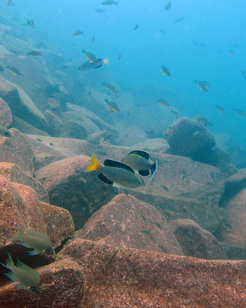The mechanisms and evolution of social influence

The production, perception, and cognitive processing of social cues can have far reaching effects on the social structure and behaviour of individuals within animal groups. Studying how the nature, frequency, and fine-scale detail of these interactions leads to emergent properties at the level of the collective is essential for understanding social and colelctive behaviour generally.
An aspect of social interaction that is commonly overlooked in studies of collective systems is that interacting nodes within social networks are not of equal status – a hierarchy exists that affects the nature and frequency of interactions among individuals, and ultimately the influence an individual will have in its social network. This hierarchy may be based on size, sex, familiarity, or reputation, and has the potential to influence numerous aspects of sociality and collective behaviour.
In this project, we seek to understand how relationships among group members can mediate the flow of information within natural groups of either Lake Tanganyikan cichlid fish or colonial spiders in Central America. We aim to characterise social influence at numerous levels – from behavioural interactions in the lab to studies of massive populations in the field, examining the neurobiological basis of social influence and socio-cognitive abilities that facilitate social interactions.
We seek students who wish to employ multidisciplinary approaches to explore their own research questions around this central theme. In our department, students have access to cutting edge digital tracking of animal behaviour and leading molecular techniques, which can be combined with in-depth lab and field experiments examining the adaptive significance and mechanisms of social influence.
Keywords sociality, hierarchy, optimality, learning, neurobiology, adaptation, selection, ecology, cichlid, invertebrate, tracking
Main advisor Alex Jordan, MPIO Radolfzell / University Konstanz
